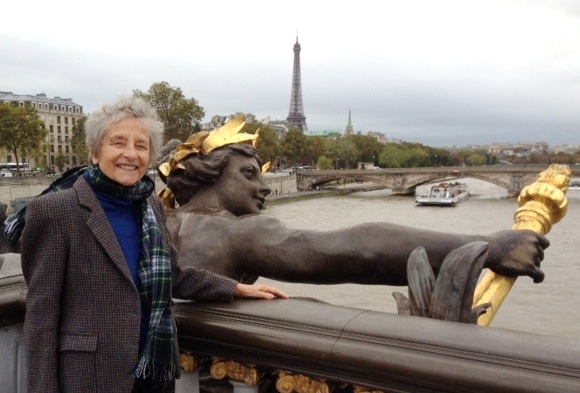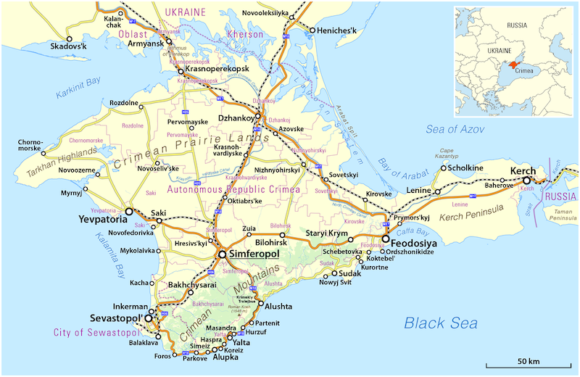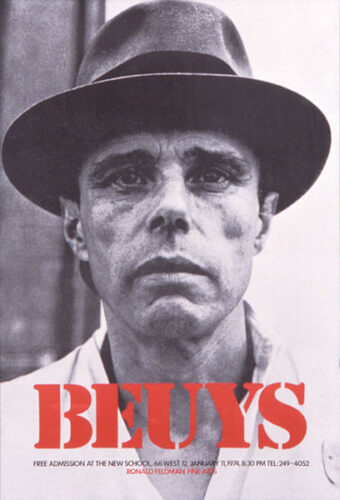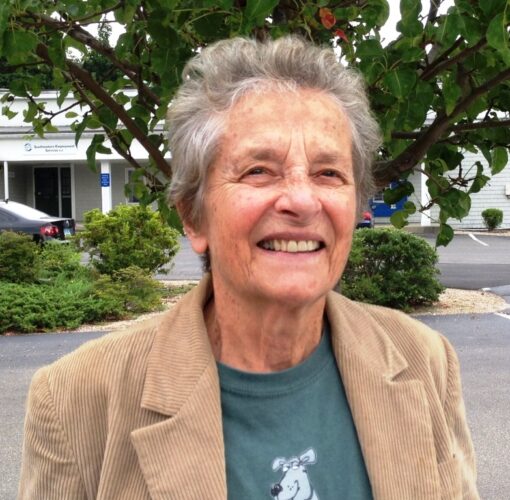
Subsequent to the Russian occupation of Crimea in 2014, which took place 60 years after USSR First Secretary Nikita Khrushchev transferred it to Ukraine in 1944, the strategically-important peninsula has frequently made news headlines.
I visited the region twice and have always been fascinated by the important events and famous people with which it is associated.

In July 1990, my husband Alan, four friends and myself were sailing around the Black Sea on “Katy II”, our French-built 44 ft. ketch. After a 24-hour stretch from Sochi, we proceeded south through the Sea of Azov. Lightning followed us throughout the night. (Alan’s comment was, “That was a hell of a good sail,” while mine was along the lines of, “That was a hellish sail in spades!” )
We reached the Crimean coast, carefully keeping away from the naval base of Feodosia. We passed Koktebel, famous for its writers’ colony, which has existed there since 1911. Some of the greatest Russian poets, among them Anna Akhmatova and Marina Tsetaeva, spent time at the colony.
As we approached the port town of Alushta, a booming voice from a loudspeaker barked, ” What are you doing there?”
Soon after, we were boarded by the Soviet Coast Guard. Their metal launch rammed violently into our boat.
But the encounter turned out to be pleasant. The sailors enjoyed having their picture taken with Jane, our young crew member from California.
Then we sailed along a beautiful coast, reminiscent of the French Riviera. with elegant residences, hotels and casinos. This was the resort of Gurzuf where Alexander Pushkin spent a few months in exile in 1821 for having written a piece about freedom.
Yalta is located in a spectacular setting, with a mountainous backdrop reminding me of Table Mountain in Cape Town. Initially, we tied “Katy II” near a boardwalk in the center of town. The people had never seen a foreign sail boat before, so you can imagine the crowd.
It was on Yalta‘s boardwalk that Anton Chekhov staged one his most charming short stories entitled, ” The Lady and the Dog.” The Russian playwright, sick with tuberculosis, spent his final days in the mild Mediterranean climate of Crimea.
While staying in Yalta, we toured the vineyards’ cellars to taste some of the many sweet wines, like Porto, Tokaï or Muscat, grown on the sun-drenched hills.
Nicholas II, Alexandra and their five children spent several blissful summers in their Livadia palace, near Yalta. The elegant, neo-classical buildings overlook the Black Sea.
In February 1945, the conference of the “Big Three” took place in this gorgeous area. US President Roosevelt stayed in the last Tsar’s summer residence. A special apartment was arranged for him on the ground floor. A few miles away, British Prime Minister Winston Churchill settled in the Vorontsov Palace – an extravagant architectural complex combining Moorish and gothic styles. S0viet Union Premiiiapi Stalin took his lodgings in the Koreiz palace also nearby.
As we cleared a rocky promontory, west of Yalta, the Russian Coast Guard paid us another “visit”. The reason this time was that we were too close to the seaside “dacha” of Gorbachev in Soros.
In 1992, I accompanied the team from the Pushkin museum Department of Ancient Art and Archaeology to the ancient site of Pantikapeon * (or modern Kerch) on the most eastern point of the Crimean peninsula. I knew the team since I had taken part in the excavation of a 17th century estate located on the grounds of the Pushkin museum in Moscow.
After a 28-hour train ride with the friendly group, lots of singing and a fair amount of vodka, we reached our dig-house at the foot of Mount Mithridates.
In the 7th century BC, Pantikapeon was one of the most important settlements created by the wealthy Greek cities of Asia Minor (or modern Turkey) on the northern shore of the Black Sea. Numerous archaeological sites are being excavated by Russians, Ukrainians as well as Westerners in this part of the world.

The Kerch region still shows traces of the fierce combats, which took place between the German and Soviet forces, particularly between 1941and 1942. Out of the tragic scenes of devastation and killings came an amazing story of redemption though it is disputed by German military sources.
It is the story of the controversial modern German artist Joseph Beuys (1921-1985). He was flying with the Luftwaffe during World War II over Crimea. His plane was shot down and a Tatar shaman rescued him. (A shaman is someone who interacts with the spirit world through altered states of consciousness, such as trance.)
The shaman saved the pilot’s life by rubbing sheep fat on his skin and covering him with a felt blanket. From then on, felt and grease constituted the central part of the artist’s works and “installations.”
Wikipedia notes, however, that, “Records state that Beuys remained conscious, was recovered by a German search commando, and that there were no Tatars in the village at the time.”
Today, Beuys is considered an icon in Berlin.
Author’s Note: For more information about the Pantikapeon excavation, access my article titled, ‘The View from Mount Mithridates’, published in the November/December 1994 edition of ‘Archaeology’ magazine.

About the author: Nicole Prévost Logan divides her time between Essex and Paris, spending summers in the former and winters in the latter. She writes an occasional column for us from her Paris home where her topics will include politics, economy, social unrest — mostly in France — but also in other European countries. She also covers a variety of art exhibits and the performing arts in Europe. Logan is the author of ‘Forever on the Road: A Franco-American Family’s Thirty Years in the Foreign Service,’ an autobiography of her life as the wife of an overseas diplomat, who lived in 10 foreign countries on three continents. Her experiences during her foreign service life included being in Lebanon when civil war erupted, excavating a medieval city in Moscow and spending a week under house arrest in Guinea.
Editor’s Notes: i) This is the opinion of Nicole Prévost Logan.
ii) The offset poster for US lecture-series ‘Energy Plan for the Western Man’ (1974) by Joseph Beuys, organised by Ronald Feldman Gallery, New York is published courtesy pf Ronald Feldman Fine Arts, New York. This file is licensed under the Creative Commons Attribution-Share Alike 3.0 Unported license.